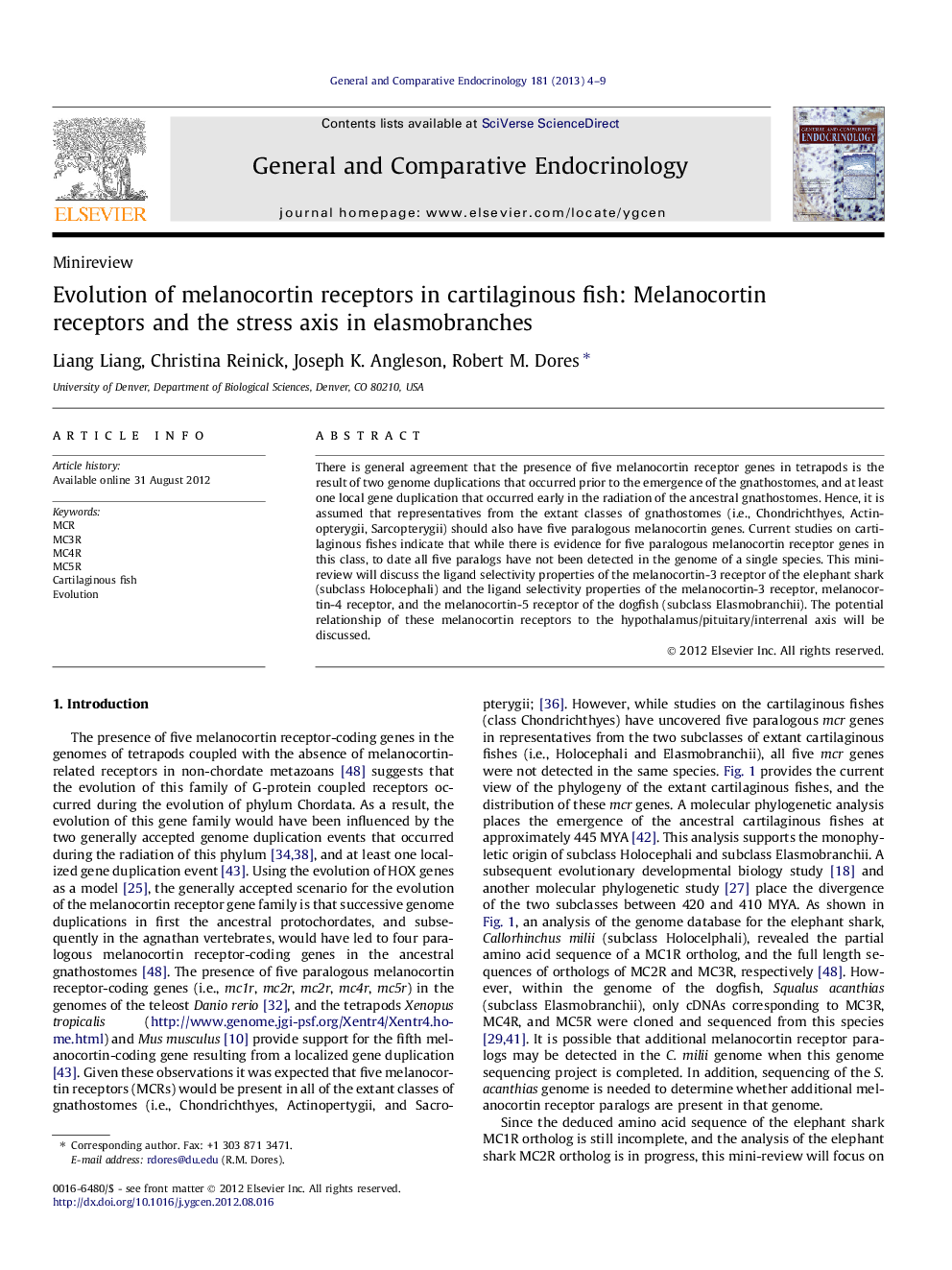| Article ID | Journal | Published Year | Pages | File Type |
|---|---|---|---|---|
| 2800392 | General and Comparative Endocrinology | 2013 | 6 Pages |
There is general agreement that the presence of five melanocortin receptor genes in tetrapods is the result of two genome duplications that occurred prior to the emergence of the gnathostomes, and at least one local gene duplication that occurred early in the radiation of the ancestral gnathostomes. Hence, it is assumed that representatives from the extant classes of gnathostomes (i.e., Chondrichthyes, Actinopterygii, Sarcopterygii) should also have five paralogous melanocortin genes. Current studies on cartilaginous fishes indicate that while there is evidence for five paralogous melanocortin receptor genes in this class, to date all five paralogs have not been detected in the genome of a single species. This mini-review will discuss the ligand selectivity properties of the melanocortin-3 receptor of the elephant shark (subclass Holocephali) and the ligand selectivity properties of the melanocortin-3 receptor, melanocortin-4 receptor, and the melanocortin-5 receptor of the dogfish (subclass Elasmobranchii). The potential relationship of these melanocortin receptors to the hypothalamus/pituitary/interrenal axis will be discussed.
Graphical abstractFigure optionsDownload full-size imageDownload as PowerPoint slideHighlights► ACTH is a more potent ligand for activation of elephant shark MC3R than α-MSH. ► Dogfish MC3R, MC4R, MC5R can be activated by ACTH or the MSHs. ► It appears that the HPI axis in cartilaginous fishes can be activated by multiple ligands.
